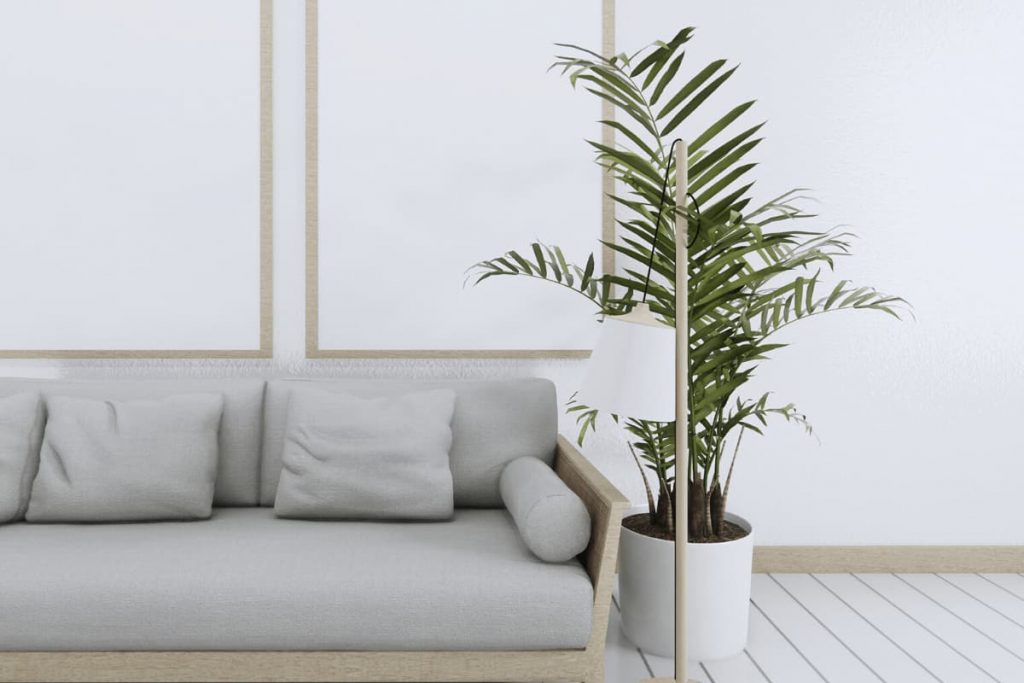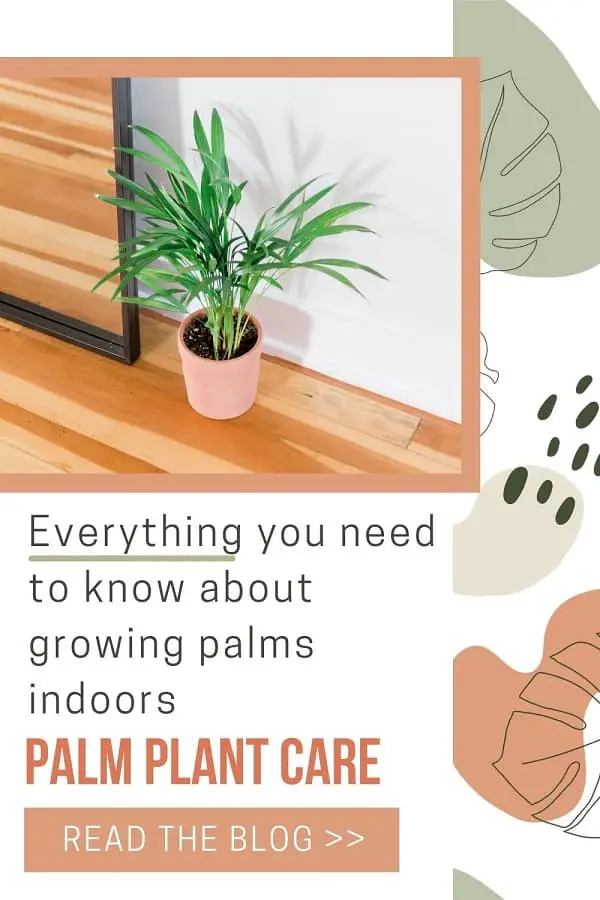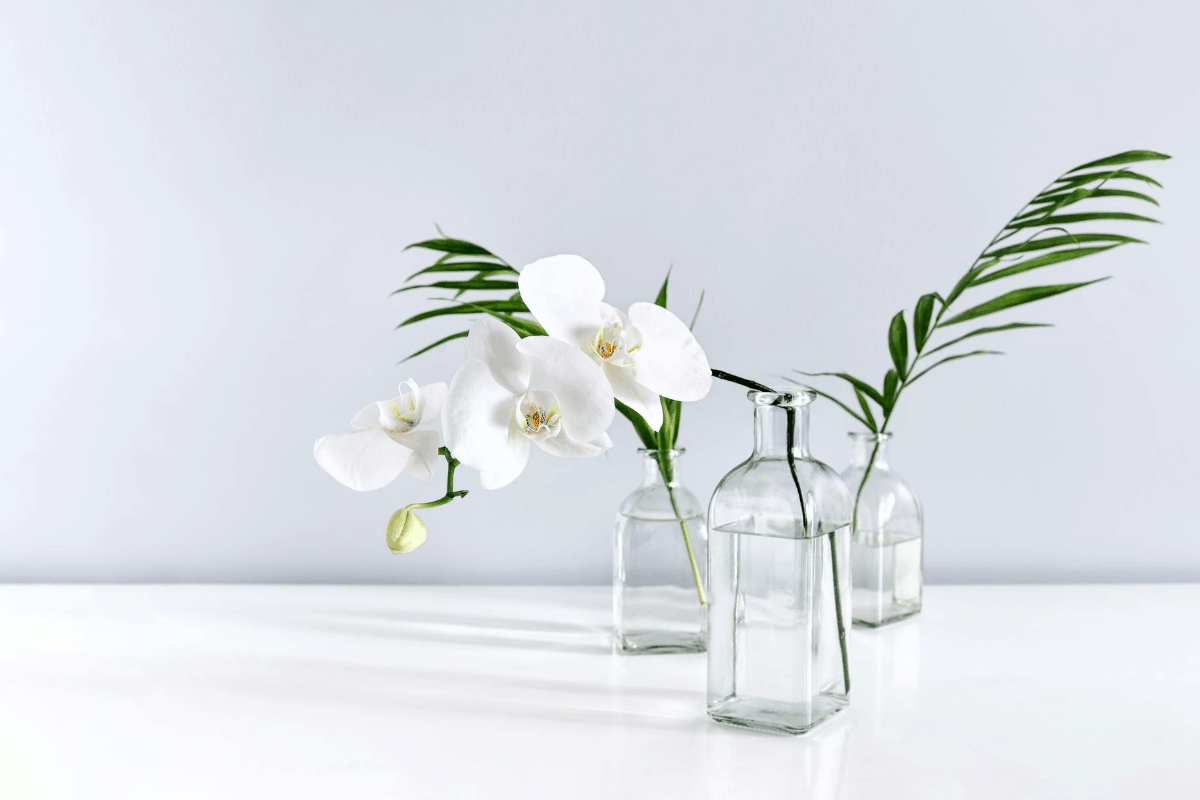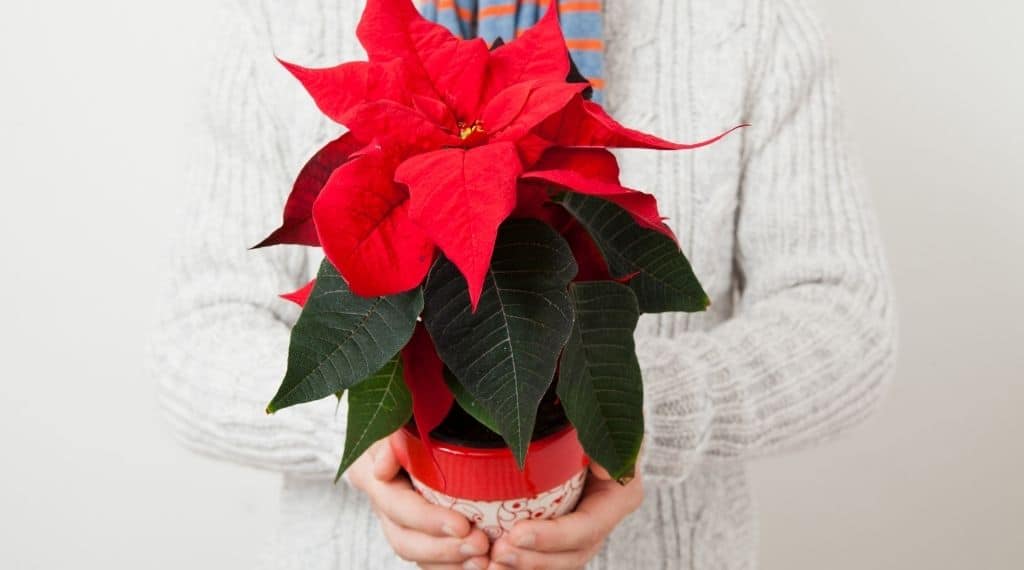Palm Plant Care Guide – Growing Palm Plants Indoors
Palm plants are beautiful houseplants that offer an elegant look and year round tropical feel to your home. Knowing how to care for palm plants will enhance the look and feel of these naturally beautiful plants and help keep your palm plants alive and healthy.
If you’re looking to spruce up your living space or need to fill an area that currently looks neglected, palm plants are perfect for this.
Palms look stunning in the corner of any room, especially if you have light colored walls. Plant your palms inside vibrant pots for a brightened look, or use a neutral colored basket for more modern style.
When you learn how to care for palm plants, you’ll find that they can be fairly easy to grow. With the right amount of light, water and soil, your palms are sure to stay healthy and vibrant.
When cared for properly palms will grow for many years. An interesting tidbit about palms is that they will tend to grow taller but not wider. Some palms, such as the majesty palm, can grow so tall that they will eventually outgrow your interior.
It’s important to note that not all palm plants can be grown indoors. Make sure to do a little research before rushing out and purchasing one.
Here are a few answers to the most commonly asked questions around how to care for palm plants indoors.
This site features affiliate content. As an affiliate partner of various brands, we earn commissions on qualifying purchases, at no extra cost to you. Please read our disclaimer for more information.
Do Palm Plants Need Direct Sunlight?
No, do not place palm plants in direct sunlight. Direct sunlight will scorch the leaves and damage the plant for good.
Most palm plants grow well indoors because they don’t require direct sunlight. Instead, they tend to thrive in natural low-light conditions where the sun’s rays do not fall directly on the leaves.
Palms cannot survive in complete darkness. If you are placing your palm in an area that doesn’t receive natural light such as a windowless rec room or in a corner where sun doesn’t reach, you will want to invest in a grow light. Grow lights can also be helpful in giving your palm the required light during the winter months when there is less sunlight.
Palm plants’ ability to thrive in low-light are one of the most common reasons they have become such popular home decor pieces.
Always read the care instructions that come with your plant.
How Do I Know If My Palm Plant Needs Watered?
You never want the soil of your palm plant to fully dry out. It should always remain slightly moist, but not soggy. The frequency of watering will depend on the humidity levels in your home as the palm will draw moisture from the air.
Brown leaves can be a sign of underwatering, whereas yellow leaves can be a sign of overwatering. By planting your palm in a pot that has drainage holes, this will help reduce the chance of overwatering.
Although you’ll want to water your palm plant on a regular basis they can tolerate being under watered unless the leaves are turning yellow.
Because most palm plants are planted in deep pots, it can be hard to tell if the soil beneath the surface is moist or not. We like to use a moisture meter that will that will help us know when to water our palm plants.
Over watering is the number one killer of palm plants, it’s best to err on the side of caution and let the soil mostly dry out before watering.
What Is The Best Soil For Palm Plants?
The type of soil you use for your palm plant is very important. You’ll want to choose a well-draining light weight soil to plant your palm in.
We like to use a homemade DIY potting soil for our palm plants.
3 parts compost – excellent source of nutrients
2 parts coco coir – helps retain the water and nutrients while keeping the mixture lightweight
1 part pumice – helps eliminate clumping and compacting, keeps the soil aerated and fast draining
You’ll know if you have the right quantity of each ingredient by whether of not the soil clumps together or falls apart.
If it clumps together, you need to add more pumice, if it falls apart then you’ve likely created a good well-draining mixture.
The reason that you want a well-draining soil is to prevent root rot. Once your palm is planted you won’t be able to see or feel the roots. The water needs to be able to penetrate all the way through the soil without pooling or gathering causing the area around the root to become soggy.
You may choose to add some shredded bark to your mixture for added air flow as this will also help the soil from clumping when watered.
What To Do With Brown Leaves On Palm Plant
Why Do Tips Of Palm Leaves Turn Brown?
This one of the most common questions new palm plant owners have. If the tips of the leaves on your palm plant have started turning brown it’s a sign that the plant needs some attention. If you do not address the brown tips quickly, you risk losing your entire palm plant.
First, you need to figure out why the palm plant leaves are turning brown. There could be several reasons for this such as:
Low Humidity
As these plants are tropical or sub-tropical, humidity plays an important role in their survival. If the humidity levels in your house are low (or dip low at certain times of the year), you’ll want to add a humidifier to your room. This will not only be good for your palm plant but for you as well. Dry, hot weather is and dry winters are common conditions for the humidity levels in your home to change, causing the leaves on your palm to turn brown. Increasing the humidity level should fix this.
Too Much Fertilizer
Fertilizer is often used incorrectly when it comes to indoor plants, especially palms. Fertilizer is often unnecessary but if you do choose to use it, only use it on healthy plants that are in an active growth cycle. Never use fertilizer to try and revive an ailing plant. If you do decide to add a bit of fertilizer to your growing palm, we recommend that you dilute the recommended dose to half of what the label suggests. Too much fertilizer could be having an adverse effect and instead of keeping your palm healthy, it could be harming it, causing the tips of palm leaves to brown.
Overwatering
This is the number one killer of palm plants. Palm plants do best when their soil is kept moist but not soggy. If you overwater your palm it can cause the roots to rot. Once the roots begin to rot, they are unable to draw water up to the leaves which will result in the leaves of your palm to start turning brown. Excess water should be drained out. Check to make sure your soil is well draining and the water isn’t just pooling underneath, dry up an excess water. The soil should be able to dry out slightly between each watering, palms are very tolerant to being under-watered but you’ll still want to be do your best to water your plants on a regular basis.
Cold Temperatures
Again, these plants are meant for warm climates. Do not place your palm near an outside door, drafty window or an area in your home where the temperature may dip below 45 degrees such as a basement in the wintertime. If you have air conditioning in your home do not place your palm in direct flow of the cold air.
These are all common reasons why your palm leaves may be starting to brown, losing their exotic appeal. Learning how to care for palm plants will help you eliminate bad brown leaves. If you take care of the factors mentioned above, then your plant should remain strong, healthy and vibrant.
Should I Trim Or Cut Off Brown Palm Leaves
When palm plants start to show brown tips, they can start to look drab and dull, causing you to want to ditch the plant and replace it with a fresh new one to keep your home aesthetically pleasing.
However, there are a few things you can try before deeming the plant doomed.
First you need to determine if the brown leaves are being caused by any of the conditions listed above. Once you know the cause of the browning you’ll need to treat that first to prevent a continuous browning cycle.
If the new growth is coming in fully green, this is a good sign that you have a healthy palm plant. This means that the browned leaves have naturally died off.
In this case, you can simply remove any of the fully browned leaves (or wait for them to naturally fall off on their own). Cut the leaf off as close to the stem as possible. When palm plant leaves are in the early stages of yellow or brown, they are still providing nutrients to the rest of the plant and are best to be left alone.
For some palms with larger leaves, if just the edges of the leaves are browning there is no need to cut off the entire leaf. Instead, you can trim the edges following the natural shape of the leaf.
Never tear the leaf or a piece of the leaf off.
Pruning your plant can help keep it healthy and keep nutrients flowing throughout the entire plant but you need to be extremely careful not to harm the plant.
For proper palm plant pruning instructions check out these do’s and don’ts.
Add Palm Plants To Your Home Decor
Palms are excellent for letting you know when something is wrong just by looking at their leaves. Palm plants can be quite easy to care for once you know how and what to look for to know if your palm is healthy.
We love the way palm plants fill the space in living rooms and bedrooms and enjoy seeing the variety of ways in which people are using palms to decorate their homes.
These beautiful plants will not only liven up any room, they’ll also help reduce stress and improve the air quality in your home. With many varieties to choose from, you’re sure to find one that suits your home decor.
More Plant Care Tips
For more plant care tips check out these articles:
Must Have Indoor Plant Care Tools
Are Terracotta Pots Good For Houseplants




